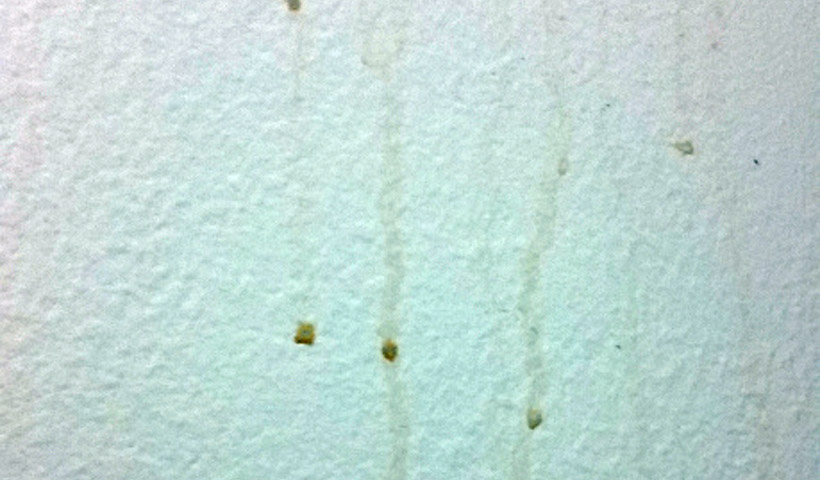Surfactant leaching is a common problem that occurs on painted surfaces shortly after the paint job is done. It is usually simple to correct, so long as proper painting technique was followed. Here is how to identify surfactant leaching, fix it and avoid it in the first place.
What is Surfactant Leaching?
If you’re seeing glossy streaks, spots or residue on your newly painted walls, that is surfactant leaching. This process is also called exudate staining, and it can permanently stain the wall.
Surfactants are ingredients in paint. They are useful chemicals which reduce the surface tension in most paints, which helps them coat a surface more easily and have a better finish. Latex-based paints often need more surfactant in order to keep the latex mixed in properly with the other ingredients, which means that surfactant leaching is often a larger problem with water-based latex paints.
While these chemicals are very important and useful, surfactants can prematurely leach out of the paint if the paint is exposed to the wrong conditions.
How to Avoid Surfactant Leaching
Surfactants are used in most paints, and you likely would not want to avoid them. If a manufacturer does not use surfactants to add certain qualities to their product, they might use volatile organic compounds (VOCs) instead, which are not environmentally sound. So, instead of avoiding surfactants, it’s important to paint properly and avoid the leaching problem.
In order to give your paint the best chance of not leaching your painter should:
- Proper application: You should not paint a surface in damp or humid conditions. If the weather is excepted to be damp or humid that night, you should not paint in the later hours of the day.
- Proper curing: Exposing a painted surface to humidity before it has properly cured can cause surfactant leaching. Allow any interior paint film to cure for seven days, or the length of time the manufacturer recommends before it is exposed to steam, humidity, or condensation.
- Understand humidity and cold temperatures: Know how your paint specifically responds to humidity or colder temperatures. You may want to wait to paint or allow for more curing time if you have these conditions.
How to Fix Surfactant Leaching
Fixing surfactant leaching is important to give your final painted surface the polished look that you expect. On exterior surfaces, natural weathering of your paint should remove surfactant leaching relatively quickly, so you don’t need to do anything.
For interior surfaces, there are things you should do to fix the leaching. When you notice the leaching, attempt to rinse it with water. For more significant leaching, you can use mildly soapy water and a very soft sponge to remove the surfactant. Note that you have to be very careful to avoid disturbing the paint film, as it will not yet be cured. Serious leaching may reappear once or twice, so keep your eye on the surface.
Surfactant leaching is an aesthetic issue that should not undermine the quality of the paint job. Do not paint over the leaching until the original coat is fully cured, and the leaching has been washed off, or you can damage the paint.
Looking for more personalized advice? If you need a dependable home painter in Brentwood, Oakley, Antioch, or anywhere in Contra Costa, we’re happy to help.



